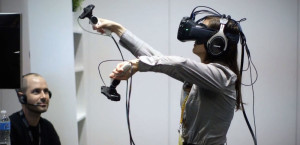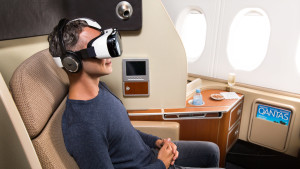When the Kickstarter for the Oculus Rift went up, it started a renewed interest in the idea of virtual reality; an idea that had seemingly died in the 90s. Now that Oculus has shown their consumer version this week, and Valve has announced its Vive headset, it looks like 2016 will finally be the year of consumer VR. VR is expected to become the “next big thing”, and that will likely lead to adoption rates similar to the rise of the smartphone. But how will VR impact the smartphone market?

So far, most available virtual reality experiences take through desktop computers. You plug a headset into a PC, which is in a room set up with position sensors to track your movements. The headset uses the computer’s processing power to track all head movements, and update the display as you move to trick your senses into believing you are in a different place. Although this experience is exciting on its own, it won’t be enough for many people. Most people don’t have powerful desktop computers anymore, and many people will want to take their worlds with them to show to friends, or to escape to a different word while on the go in an unappealing environment like an airplane. People will want to use VR the same way they do most computing today: mobile, instead of tied to their desktops. For this reason, smartphones will likely end up playing a major role in the consumer use of VR.

While not yet as powerful as desktop computers yet, you can experience VR on mobile phones today. Last year, Google announced their Google Cardboard program, which allows anyone to make a headset at home that can be used to view VR experiences with their Android phones (along with limited support for iOS). Users simply slide their phone into the headset, and the phone’s screen and position sensors will work together to allow you to experience a virtual world. Samsung went one step further and partnered with Oculus to create the GearVR; a more powerful headset that comes with additional sensors for their Note 4 and Galaxy S6 smartphones. The GearVR even comes with its own app store that is stocked with a number of impressive games and demos.

That’s the state of mobile virtual reality today, but it is likely to become a much bigger feature in phones in the near future. If virtual reality becomes something that users expect from their phones, it is likely to shape how the next generation of phones are designed. While today’s phones seem to have incredibly good screens, they suddenly look blocky and low resolution when viewed though the magnifying lenses of a VR headset. VR will likely drive phone displays to become even better than today’s screens – even if the enhanced resolution is barely noticeable by the naked eye. Phones are also likely to adopt new sensors for better VR experiences. Light field cameras and depth sensors could even allow users to create 3D maps of their rooms that they can walk around in when they put their headset on. Google is reportedly working on a version of their Android operating system designed for VR, which would allow you to use your entire phone without taking off your headset. These innovations will create a great shift in how we interact with our phones, and they will allow entirely new types of apps to be possible – and sooner than you think.

